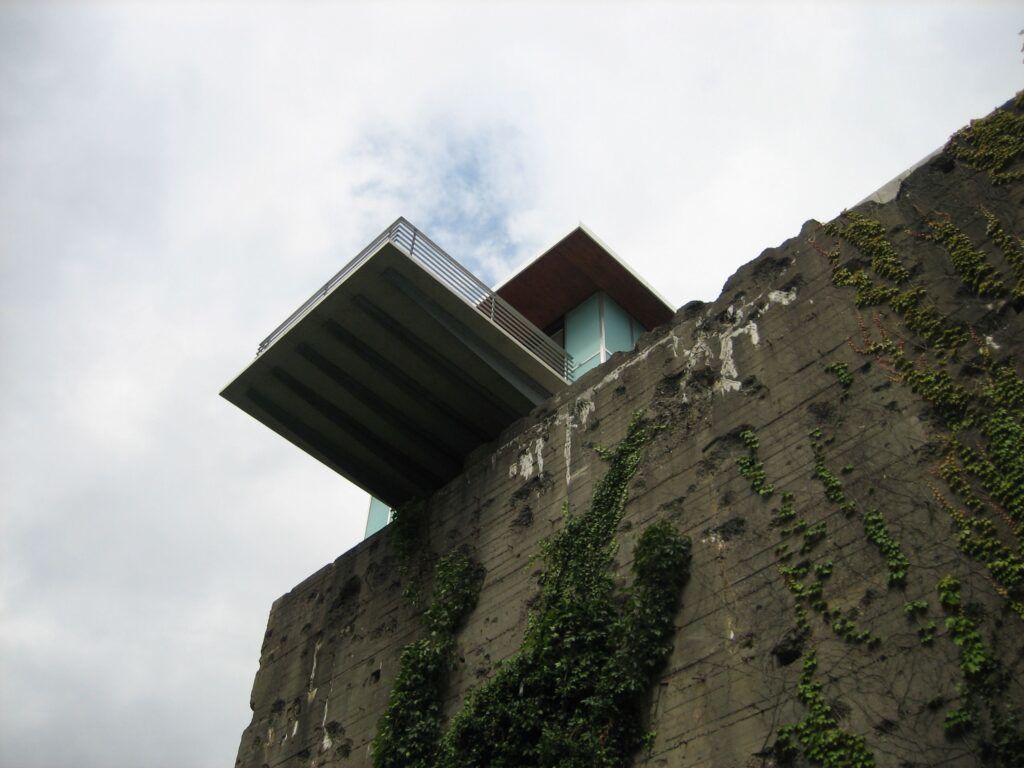Bunker Penthouse Atop a 5-Story World War Ruin

Slated to tower nine stories tall, this monolithic plinth was half-finished (at five levels high) as World War II came to its conclusion. Over a half-century later, a new structure has appeared on top, complete with incredible cantilevers.

Scarred and shipped by air attacks and bomb strikes, the structure nonetheless survived to become the eventual basis for this daring residential design addition by Amort Architektur.

To preserve its place in history, the bunker itself was left unfixed and unpainted – a monument to the past but also a vertical urban plot for a new and dramatically lofted house.

The resulting dwelling is as clean and contemporary as its foundation is aged and weathered – all new materials (mainly brick, wood and steel), modern lines and Bauhaus-worthy asymmetries combine to create stark contrasts on all sides, while an emphatic domesticity prevails within.
Cantilevered exterior decks and interior volumes make the home visible from below, even via the steepest angles of view underneath, while also extending the inhabitable square footage and engaging views from above.
From the architects:
“Is there any information on the construction of the bunker? It was planned to be nine storeys high, but after the construction of five floors, the war was over. The bunker has survived several air attacks. The damage is mostly recognizable on the west side, but it did not seriously harm the bunker. There are only large amounts of chipped concrete scars visible. How did the idea of building a single family home arise? The bunker is treated as an urban, vertical plot, on top of which there is something new created. The urban qualities such as infrastructure and the public park were crucial to opt for the choice of the bunker as a bulding site. The bunker itself remains completely intact as a historical document, purposely unchanged and unpainted. From an architectural perspective, these actions would be absolutely reprehensible and wrong.”




